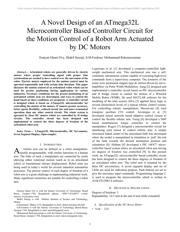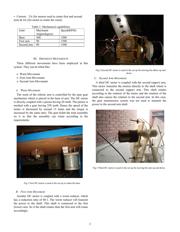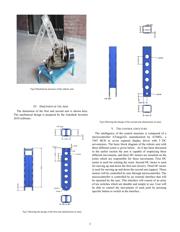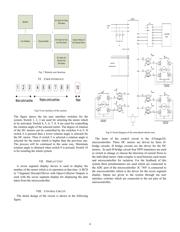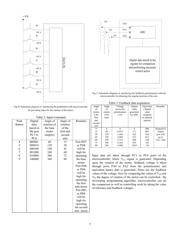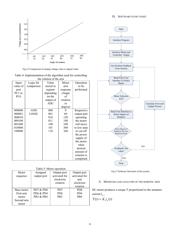Datasheet 搜索 > 微控制器 > Microchip(微芯) > ATMEGA32L-8MU 数据手册 > ATMEGA32L-8MU 其他数据使用手册 1/8 页
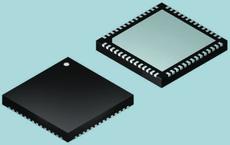
 器件3D模型
器件3D模型¥ 68.646
ATMEGA32L-8MU 其他数据使用手册 - Microchip(微芯)
制造商:
Microchip(微芯)
分类:
微控制器
封装:
VQFN-44
描述:
ATmega 系列 8 MHz 32 KB 闪存 2 KB SRAM 8 位 微控制器 - VQFN-44
Pictures:
3D模型
符号图
焊盘图
引脚图
产品图
页面导航:
导航目录
ATMEGA32L-8MU数据手册
Page:
of 8 Go
若手册格式错乱,请下载阅览PDF原文件

1
Abstract— Articulated robots are generally driven by electric
motors where proper controlling signal with proper time
synchronism are needed to have control over the movement of the
robot. Electric motors employed for the motion control must be
operated sequentially and with certain time duration. This paper
discusses the motion control of an articulated robot which can be
used for precise positioning having applications in various
industries. Necessary conditions for the precise positioning of an
articulated robotic arm are determined, and ways to control the
hand based on these conditions are proposed. A controller circuit
is designed which is based on ATmega32L microcontroller for
controlling the motion of the motors. It ensures greater accuracy,
better speed, flexibility, reduced circuit size and more economical
operation than any other control circuit. The whole system is
operated by three DC motors which are controlled by H bridge
circuits. The controller circuit has been designed and
implemented to control the three degrees of freedom of the
articulated robot arm.
Index Terms— ATmega32L Microcontroller, DC Servomotor,
Seven Segment Display, Opto-coupler.
I. INTRODUCTION
robotic arm can be defined as a robot manipulator,
usually programmable, with similar functions to a human
arm. The links of such a manipulator are connected by joints
allowing either rotational motion (such as in an articulated
robot) or translational (linear) displacement. Robot arms are
being used in today’s world for several industrial automation
processes. The precise control of each degree of freedom of a
robot arm is a great challenge in implementing industrial work.
Many significant researches are notable for controlling a robot
arm.
Enaiyat Ghani Ovy is with the Islamic University of Technology, Board
Bazar, Gazipur-1704, Bangladesh (phone: +8801714334897; e-mail:
enaiyat_ovy@yahoo.com).
Shakil Seeraji is with Military Institute of Science and Technology,
Mirpur
Cantonment, Dhaka-1216, Bangladesh (e-mail: shakil.ae@mist.edu.bd).
S.M.Ferdous is with the Islamic University of Technology, Board Bazar,
Gazipur-1704, Bangladesh (e-mail: tanzir68@gmail.com).
Mohammad Rokonuzzaman is with the Islamic University of Technology,
Board Bazar, Gazipur-1704, Bangladesh (e-mail: rokon.iut@gmail.com).
Lygorouas et al. [1] developed a computer-controlled light-
weight mechanical arm. This mechanical arm was a self-
contained, autonomous system capable of executing high-level
commands from a supervisory computer. The actuators of the
joints were permanent magnet type dc motors driven by servo-
amplifiers via Pulse Width Modulation. Aung [2] designed and
implemented a controller circuit based on PIC microcontroller
and H bridge circuit to control the motion of a Wheeled
Mobile Robot (WMR). He used MATLAB software for the
modeling of the total system. Silva [3] applied fuzzy logic at
several hierarchical levels of a typical robotic control system.
For controlling robotic manipulators, Moosavian [4] used
transpose jacobian (TJ) control. Arciniegas et al. [5]
developed neural network based adaptive control system to
control the flexible robotic arm. Tseng [6] developed a DSP
based instantaneous torque controller to control the
manipulator. Rogers [7] designed a microcontroller circuit for
interfacing joint sensor to control robotic arm. A simple
structured linked model of the articulated limb was developed
where the model is manipulated in simulation to ‘pull’ the end
of the limb towards the desired destination position and
orientation [8]. Hisham [9] developed a PIC 16F877 micro-
controller based system where an articulated robot arm having
six degrees of freedom was controlled [9]. In this present
work, an ATmega32L microcontroller based controller circuit
has been designed to control the three degrees of freedom of
an articulated robot arm. The robot arm is actuated by the
three DC servomotors. A seven segment display and set of
LEDs are used for indication purpose. Push buttons are set to
give the necessary input commands. Programming language C
is used to program the microcontroller which is written in
AVR STUDIO 4 software.
II. MECHANICAL SPECIFICATIONS
Degrees of freedom: 3
Repeatability: ±0.5 mm at the end of arm (fully extended)
A. Specification of the DC Servo Motor
• Volt : 12V
A Novel Design of an ATmega32L
Microcontroller Based Controller Circuit for
the Motion Control of a Robot Arm Actuated
by DC Motors
Enaiyat Ghani Ovy, Shakil Seeraji, S.M.Ferdous, Mohammad Rokonuzzaman
A
Cyber Journals: Multidisciplinary Journals in Science and Technology, Journal of Selected Areas in Robotics and Control (JSRC), April Edition, 2011
器件 Datasheet 文档搜索
AiEMA 数据库涵盖高达 72,405,303 个元件的数据手册,每天更新 5,000 多个 PDF 文件
